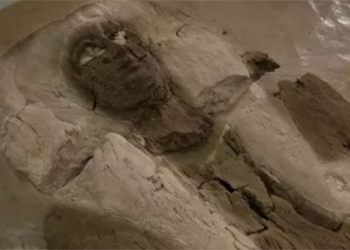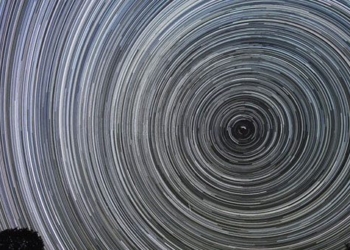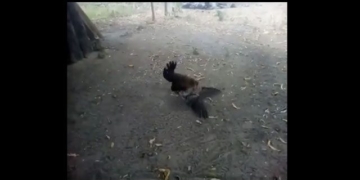The Dolmen de Soto is an underground architectural structure located in Trigueros, Andalusia, Spain. Also known as “the Stonehenge of the underground,” this megalithic site was constructed between 4,500 and 5,000 years ago and is one of approximately 200 burial sites from the past in Huelva.
The dolmen consists of a circular earth mound with a long passage leading to a chamber, where eight human skeletons were found alongside various artifacts including cups, bowls, plates, daggers, and marine fossils. However, what makes this tomb truly unique is the presence of engravings and paintings on several standing stones along the passage and in the chamber. These images depict humans, cups, daggers, and geometric shapes, providing a glimpse into the beliefs and customs of the people who built and used this tomb.
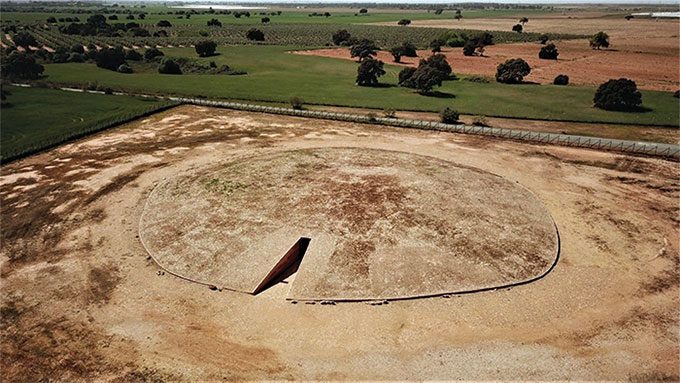
The dolmen consists of a circular earth mound with a long passage leading to a chamber. (Illustrative image).
The origins of building Neolithic tombs in Europe remain a mystery. However, we know that the Neolithic Revolution began around 10,000 BC in the modern-day Middle East, but the development and spread of tomb architecture in Europe are still not clearly understood.
By the 5th and 4th millennia BC, passage graves became more common, likely stemming from earlier burial styles in Eastern Europe. The emergence of these dolmens may have started on the Iberian Peninsula before spreading northward to Atlantic Europe.
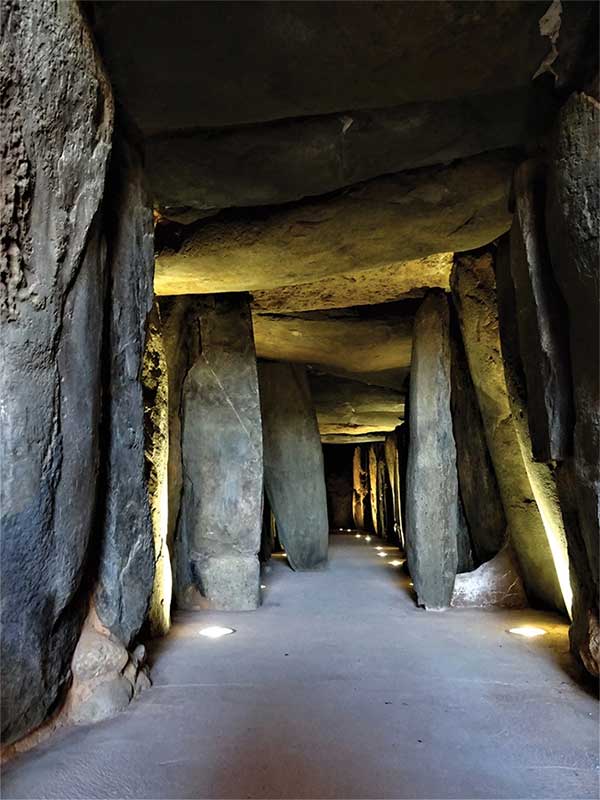
The passage inside the dolmen. (Illustrative image).
The Dolmen de Soto was discovered in 1923 by Armando de Soto Morillas, who intended to build a new house on his land. He quickly realized that he had stumbled upon an ancient site and contacted the German archaeologist Hugo Obermaier, who excavated and documented the dolmens from 1924 to 1926.
While the Andalusia region has about 1,650 Neolithic burial sites (with approximately 210 in Huelva alone), the Dolmen de Soto stands out as the most unique architecture among them due to its isolation, differing from the centralized architectural styles of other locations.
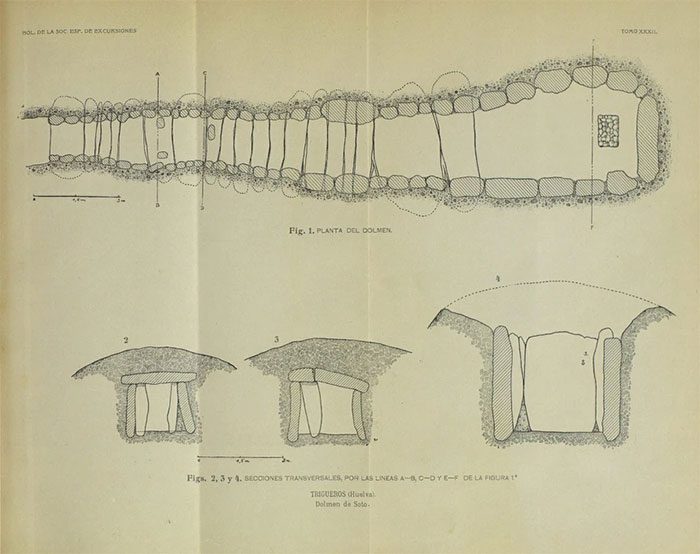
The Dolmen de Soto is the most unique architecture among them due to its isolation. (Illustrative image).
From the outside, these tombs typically feature a circular earth mound with an entrance facing east-west leading to an underground corridor. This corridor, known as the passage, usually connects to a designated burial chamber.
In the Dolmen de Soto, the passage and chamber create a continuous and gradually expanding gallery. The stone columns inside the corridor and chamber are carved with megalithic art, often accompanied by schematic images. This artwork may have been created during the construction or, more likely, while the tomb was in use.
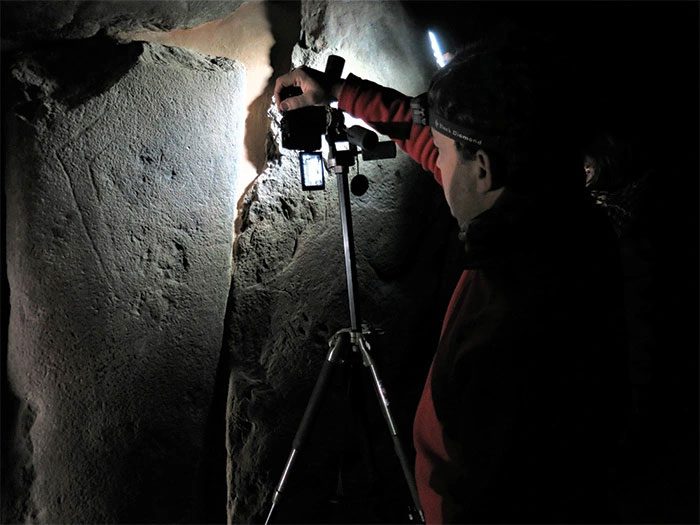
This artwork may have been created during the construction. (Illustrative image).
In recent years, a group of researchers from Portugal, Spain, and the UK has conducted a comprehensive study on the carved and painted stones inside the dolmen. They utilized various techniques, such as Raman spectroscopy, to document and analyze images that most previous scholars overlooked.
More than 60% of the vertical stones in the dolmen have engravings and pigment traces, illuminated using photometric techniques. These images include a variety of patterns, such as circles, daggers, human figures, bowls, geometric shapes, and circular motifs, providing insights into the changes in Neolithic society, especially in the context of the introduction and use of copper and bronze weapons.
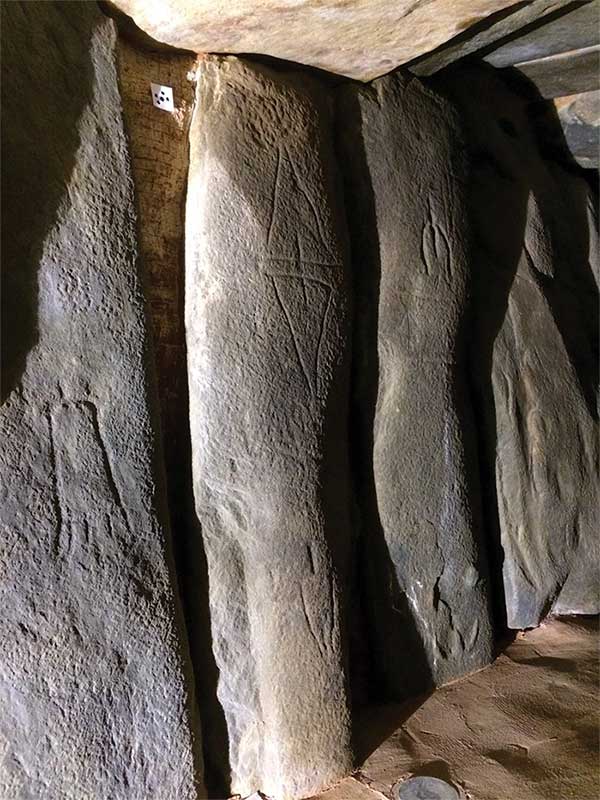
More than 60% of the vertical stones in the dolmen have engravings and pigment traces. (Illustrative image).
The research team discovered that some engravings were made by reusing an old menhir (a large upright stone), while others were created during or after the construction of the dolmens. They also found that some paintings were made with red ochre, which was used as a pigment throughout prehistory.
The researchers believe that these images may have different meanings and functions depending on their location, orientation, and visibility within the dolmen. The presence of red pigment applied to the engravings suggests an intentional act to enhance the visibility of certain patterns.
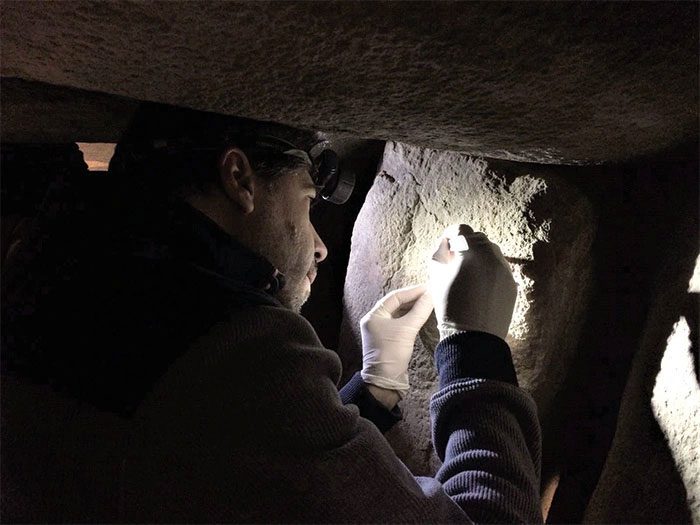
The Dolmen de Soto is open to visitors who wish to experience this remarkable site firsthand. (Illustrative image).
The research team is currently trying to determine whether this action was solely to enhance visibility or whether the paint added potency to the engravings.
The Dolmen de Soto is open to visitors who wish to experience this remarkable site firsthand. The entrance is located on the west side of the mound, where a rebuilt archway provides access inside. The passage is approximately 21 meters long and widens from 0.8 meters at the entrance to 3.1 meters towards the center. The chamber is about 3.9 meters high and circular in shape. The passage and chamber are covered by 20 conical stones forming the roof of the dolmen.








































